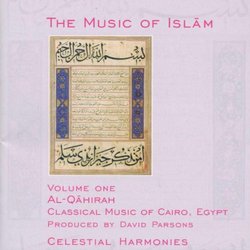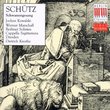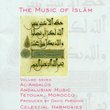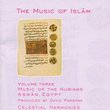| All Artists: Various Artists Title: Music of Islam 1: Al Qahirah Music of Cairo Members Wishing: 1 Total Copies: 0 Label: Celestial Harmonies Release Date: 4/14/1998 Genres: International Music, Pop Styles: Middle East, Islamic Number of Discs: 1 SwapaCD Credits: 1 UPC: 013711314021 |
Search - Various Artists :: Music of Islam 1: Al Qahirah Music of Cairo
 | Various Artists Music of Islam 1: Al Qahirah Music of Cairo Genres: International Music, Pop
|
Larger Image |
CD DetailsSimilar CDs |
CD ReviewsMusic in the classical tradition Alejandra Vernon | Long Beach, California | 12/17/2002 (5 out of 5 stars) "This is a recording that took me several hearings to fully appreciate, but has now become one of my favorites. Some of these pieces were originally composed as songs, but have here been transcribed for a six-piece group. Played by some of the finest studio musicians in Egypt, their technique and artistry is astounding; though masters of many styles, on this CD they are featured on traditional instruments: The ud (short necked lute), qanun (a type of zither), nay (oblique flute), tabalah and duff (drums), and riqq (tambourine).Some of the pieces are slow and melodic, and others virtuoso rhythmic selections for the percussive instruments. I particularly like the ud solo (track # 3) where one can hear the kinship between this music and Spanish flamenco, the nay solo (# 5), and the final track, which has an exotic melody and a rhythm that might give you the impulse to dance. The insert that comes with this CD is practically a small book, with a history of the music and the instruments used, Islam and its calligraphy, as well as extensive detail on the 12 pieces played on this CD and its musicians. The sound is good and total time 63'54.This recording is part of a superb series of 15 CDs that was 10 years in the making, with music in a wide variety of styles and a range from North Africa to Indonesia. This first volume, if you appreciate classical Arabic music, is sure to please. Also available is a 16th CD, which is a sampler with one selection from each recording in the set." Classical Arab Music with a Modern Twist Dr. Debra Jan Bibel | Oakland, CA USA | 04/28/2009 (5 out of 5 stars) "When Hakim, Amr Diab, and other popular stars of Egyptian music permeate the region with loud electric guitars and saxophones, it is good to rest the ears on classical styles. Egypt has various categories of musical styles and associated ensembles: the madh musicians of Sufism and the folk mizmar ensembles for weddings and festivals, for instance. In the late 19th century arose music regarded as art, now classical music, played by takht ensembles with a small set of instruments, a nay flute, a qanun zither, an oud lute, and a riqq drum. Sometimes, as in this recording, other percussion are included, duff frame and tabalah goblet drums. By the early twentieth century, Western violins, cellos, and other instruments entered the ensembles, which became full orchestras, and popular, long songs were developed. (Think of Oum Kouthoum.) Classical music employs suites and improvisations usually based on single maqam modes, a tradition that goes far back to Islamic Spain.
This recording, the first of 15 volumes of the outstanding Music of Islam series, send us back a century to purely instrumental art or chamber ensembles, but one with modern sensitivies and approaches. This is readily apparent with the percussion solos. It is not belly-dancing music, even though some of the rhythms lend itself to dancing. Over all, it provides a core introduction to Arabic music, as Egypt has long been the center of the Arab musical world with its recording studios and radio broadcasts. And the particular selections and the musicians are first-rate. This album is very fine indeed." |

 Track Listings (12) - Disc #1
Track Listings (12) - Disc #1


